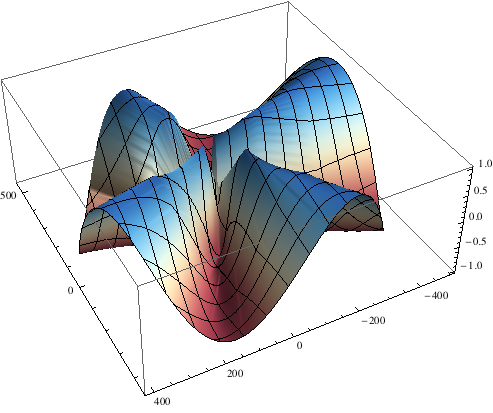

Surely this code can be improved in order to get a more elegant and fine working algorithm. Plot3D Using the mouse, you can rotate, zoom, and pan any of these plots just as you would any other 3D graphic. One method of specifying axes is to use the above options, but there is also a visual method of changing axes.Let us plot the function f ( x) 2 sin 3 x 2 cos x without ordinate but using green color and font size 12 for abscissa: Figure with abscissa only.

Make a function that creates a colored Cylinder for all your data points and then wrap. Use Manipulate with ListSurfacePlot3D to view an interactive 3D plot where you can adjust the size and color of the mesh. Fortunately, getting rid of axes in recent versions of Mathematica is very easy. However, Mathematica actually defines as what you think should be and as what you think should be for some reason. Creating something like this yourself is really easy in this case. V22 Sin, V21 Cos - V22 Cos}} ĪrcCos/(Norm Norm)] Plots in 3D integrate well with other Wolfram Language functions. V22 = V2 (* Velocity of the 2nd particle in protocol 2*) V12 = V1 (* Velocity of the 1st particle in protocol 2*)

We will learn about the persp() function of the. In this case, ParametricPlot3D is your friend - it will give you a line in 3D. After all, the equations could be degenerate, and probably other implicit assumptions that we're used to. There are many options available in R for this. The intersection of that two surfaces is a straight line. V2 (* Velocity of the 2nd particle in protocol 1*) Given the Z height values on a (X,Y) grid, we can draw the perspective plots of this surface over the (X,Y) plane. Use Manipulate, 3D graphics and other interactive functions directly in your. The first two calling sequences describe surface plots in Cartesian coordinates, while the. We plot Bernoullis lemniscate with Mathematica: ContourPlot(x2 + y2)2. V11 = V1 (* Velocity of the 1st particle in protocol 1*) The plot3d command computes the plot of a three-dimensional surface. Mathematica compiles well but I can't get a plot and I do not understand way.Ĭan anyone help me with the code and explaining me why nothing is showed on the plot? It means that parameters of the predictor-corrector algorithm have not been optimized in the paper cited.I defined a function which is composed of other several functions.

nmax = 10 var = Table[t^n, $ - see Figure 4 below. Please, note, that in my code $a=\alpha, b= \beta$, don't mess up these parameters with a=1,b=1 in ODE. We can use code from my answer here to plot the $L^2$-norm of the residual error and compute optimized parameters $\alpha, \beta$.


 0 kommentar(er)
0 kommentar(er)
